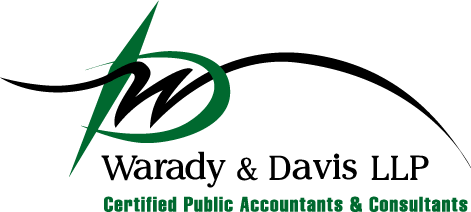Borrowers who received Paycheck Protection Program (PPP) loans under the Coronavirus Aid, Relief, and Economic Security (CARES) Act are asking their CPAs if and how they will qualify for PPP loan forgiveness. There is uncertainty over some of the program details. Organizations — especially small businesses — worry about meeting the maximizing loan forgiveness requirements.
While you may be anxious to apply for forgiveness, here are five factors the AICPA recently provided which affect the forgiveness application process timing.
- Most lenders are not ready to process forgiveness applications. Many are developing technology tools such as “forgiveness portals” or will leverage other automation options for a more efficient process. Until the U.S. Small Business Administration (SBA) and the U.S. Treasury Department issue final guidance, those technology tools can’t be finalized. The timing on when that guidance will be available is uncertain. Bank of America, as one example, is telling PPP loan holders it expects to begin opening its online loan forgiveness application process in early August and will email instructions to borrowers when it’s ready.
- Organizations have 24 weeks to use their PPP money, leaving them more time to take steps that will help them qualify for full loan forgiveness. Borrowers who received their loans before June 5, 2020, can choose either eight weeks or 24 weeks for their covered period. That increased flexibility in the time to use PPP funds can be important in maximizing loan forgiveness.
- Payroll costs are a significant component of PPP forgiveness. Many payroll providers are developing custom reports specifically to comply with PPP guidance. However, like lenders, they are waiting on final SBA and Treasury guidance so they can prepare the PPP-compliant reports borrowers will need.
- Borrowers aren’t required to make any loan payments before they apply for forgiveness or until 10 months after their covered loan period ends. Since payments aren’t due yet, there is less urgency to apply for forgiveness.
- Applying for forgiveness may be easier than clients expect. Borrowers can use a simplified process through SBA Form 3508EZ if they meet at least one of these requirements:
- They are self-employed individuals, independent contractors or sole proprietors who had no employees when they applied for their PPP loan and who didn’t include any employee salaries in calculating their average payroll amount in their application.
- They didn’t reduce salaries or hourly wages for certain employees by more than 25% during the loan period and — except for specified exceptions — didn’t reduce the number of employees or the average paid hours for employees between Jan. 1, 2020, and the end of their covered loan period.
- They didn’t reduce salaries or hourly wages for certain employees by more than 25% during the loan period and were unable to operate at the same business activity level during the loan period because of federal safety requirements or guidance related to the pandemic. CPAs expect SBA guidance to help determine how broadly this safe harbor can be used.
Be prepared
While waiting for final program guidance, borrowers can take steps to prepare for the forgiveness application process by documenting how the loan proceeds are used. Gather documentation needed to support non-payroll costs for expenses such as mortgage interest, rent or lease payments and utilities, including account statements and other proof of payments. Lenders may not request supporting documentation for all disbursements as part of the forgiveness application; however, increased scrutiny is guaranteed for loans of $2,000,000 or more.
Be patient
PPP loans have gone to 4.8 million organizations through June 30, 2020. Recent legislation extended the opportunity for organizations to apply for loans until Aug. 8. While questions remain about some forgiveness process details, CPAs are following developments. It can be difficult to be patient when your organization is affected by the ongoing uncertainty COVID-19 created. But that may be the best approach until the SBA and your lender establish a forgiveness application process.
SOURCE: AICPA
We Are Here to Help
Please visit the Warady & Davis LLP COVID-19 Resource Center for a wealth of information on stimulus assistance, new legislation and much more. This information is updated regularly. This is a rapidly evolving situation so please do not hesitate to reach out to us with any questions or concerns at 847-267-9600 or info@waradydavis.com.
Legal Notice: The materials communicated in this transmission are for informational purposes only and not for the purpose of providing accounting, legal or investment advice. You should contact your accountant or advisor to obtain advice with respect to any particular issue or problem. Use of and access to this Web site or any of the e-mail links contained within the site do not create an accountant-client relationship between Warady & Davis and the user or browser. You should not act upon any such information without first seeking qualified professional counsel on your specific matter. Any accounting, business or tax advice contained in this communication is not a substitute for a formal opinion, nor is it sufficient to avoid tax-related penalties. If desired, Warady & Davis would be pleased to perform the requisite research and provide you with a detailed written analysis. Such an engagement may be the subject of a separate engagement letter that would define the scope and limits of the desired consultation services. © 2020 All Rights Reserved.
